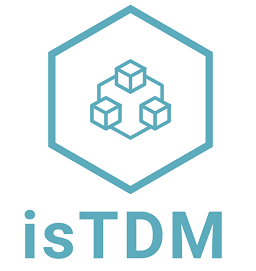Definition(s):
It supports the TD costs measurement and assessment. In this context, the principal and interest of TD must be estimated. To estimate TD items ‘ interest, it is recommended to analyze the possible scenarios. To this end, known models and strategies to estimate cost, time, and resources, such as COCOMO and Planning Poker can be used. Besides, technologies and their theoretical foundations from other fields are also mentioned to measure TD, such as Cost-Benefit Analysis, Portfolio Approach, and Value-Based Model (See Appendix D).
Source(s):
- Ampatzoglou, Areti, et al. “The financial aspect of managing technical debt: A systematic literature review.” Inform. Softw. Technol., 64 (2015), pp. 52-73.
- Li, Zengyang, Paris Avgeriou, and Peng Liang. “A systematic mapping study on technical debt and its management. Syst. Softw., 101 (2015), pp. 193-220.
- Alves, Nicolli SR, et al. “Identification and management of technical debt: A systematic mapping study.” Inform. Softw. Technol., 70 (2016), pp. 100-121.
- Fernández-Sánchez, Carlos, et al. “Identification and analysis of the elements required to manage technical debt by means of a systematic mapping study.” J. Syst. Softw., 124 (2017), pp. 22-38.
- Behutiye, Woubshet Nema, et al. “Analyzing the concept of technical debt in the context of agile software development: A systematic literature review.” Information and Software Technology 82 (2017), pp. 139-158.
- Besker, Terese, Antonio Martini, and Jan Bosch. “Managing architectural technical debt: A unified model and systematic literature review.” J. Syst. Softw., 135 (2018), pp. 1-16.
- Becker, Christoph, et al. “Trade-off decisions across time in technical debt management: a systematic literature review.” Proceedings of the 2018 International Conference on Technical Debt. ACM (2018), pp.85-94.
- BenIdris, Ammar, Dzielski. “Investigate, identify, and estimate the technical debt: a systematic mapping study.” Int. J. of Softw. Eng. Appl (IJSEA), Vol. 9 (5), (2018), pp.1-14.
- Khomyakov, Ilya, et al. “Automated Measurement of Technical Debt: A Systematic Literature.” Proceedings of the 21st International Conference on Enterprise Information Systems (ICEIS 2018) (2016), pp. 95-106.
- Klimczyk, Paweł, and Lech Madeyski. “Technical Debt Aware Estimations in Software Engineering: A Systematic Mapping Study.” e-Informatica Software Engineering Journal 14.1 (2020), pp. 61-76.
- Alfayez, Reem, et al. “A systematic literature review of technical debt prioritization.” Proceedings of the 3rd International Conference on Technical Debt (2020), pp.1-10.
- Dalla, L. O. F. B. “Systematic Mapping on a metaphorical issue of Technical Debt framework.” International Journal of Health and Pharmaceutical Research E-ISSN 2545-5737 P-ISSN 2695-2165, Vol 5. (3), (2020).
- Jeronimo Junior, Helvio, and Guilherme Horta Travassos. “Consolidating a Common Perspective on Technical Debt and its Management Through a Tertiary Study.” Information and Software Technology (2022): 106964.
- Cohn, M.: Agile Estimating and Planning. Pearson Education, Upper Saddle River, Unites States (2005).
- Moløkken-Østv, K., Haugen, N., Benestad, H. C.: Using planning poker for combining expert estimates in software projects. Journal of Systems and Software 81(12), 2106-2117 (2018).
- Boehm, B., Madachy, R., Steece, B.: Software Cost Estimation with Cocomo II with Cdrom. Prentice-Hall PTR, Upper Saddle River, United States (2020).
